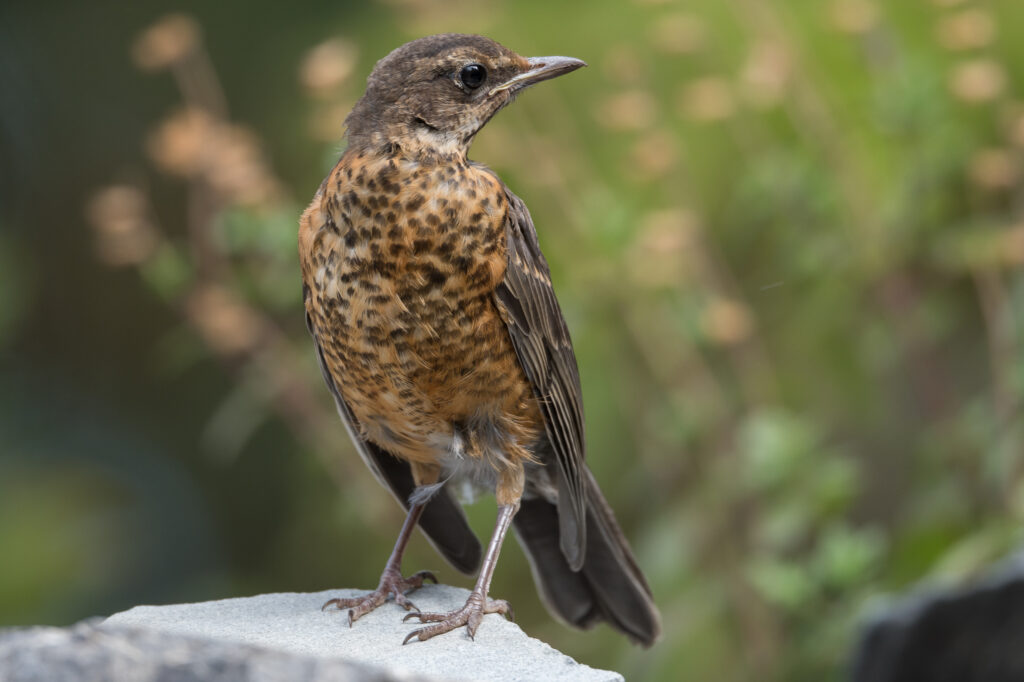Fall Migration
Sunday, September 4, 2022, dawned cloudy, providing me an opportunity for some bird photography in the yard. We had had a long run of sunny days and although I spent considerable time in the yard over the past several weeks my photos weren’t all that good due to colors being somewhat washed out in the sunlight and images exhibiting the high contrast between sun and shadows. For birding photography, sunlight usually causes problems! I could go on, but this isn’t a birding photography lesson.
Sometime just before what I would consider midmorning I looked out the window and spied an Orange-crowned warbler in the yard. By the time I could get outside with my camera the bird was gone, but this was the second omen of the day (the cloudy weather having been the first). By midmorning I was outside with my camera ready for a little birding action!
Things were at first a little slow… but another Orange-crowned warbler visit gave me hope! I birded until about mid-afternoon and over the course of 4-5 hours I had at least 8-10 Orange-crowned warbler visits from at least two different birds. (One of the birds was crippled so I knew I had at least two.) Soon thereafter we had a visit from a Black-headed grosbeak, either a female or a juvenile. There were two more visits from grosbeaks during that time, including one that descended to the watercourse and gave me the opportunity for many good photographs. During my birding time I had the following visitors…
a Yellow warbler,
a female Rufous hummingbird (time to get migration underway!),
three visits from a very shy female Western tanager (no photos),
a visit from an Empidonax flycatcher, possibly a Pacific Slope flycatcher,
and visits from some of this year’s juveniles (House sparrows, a Spotted towhee, American goldfinches, a White-crowned sparrow, a Dark-eyed junco and American robins). (Gone from the landscape were several of the juvenile Brown-headed cowbirds that were raised by some of these same species this year.)
Total photos for the day: 468/(259), which entails hours of processing, editing and organizing using Adobe Lightroom.
So here are some of my photos for the day…
This little friend (a native Townsend’s chipmunk) provides my entertainment during long periods of bird inactivity in the yard. Earlier this spring we had as many as four in the yard, but now I’m down to one, or uncommonly two. They hibernate during the winter so it probably won’t be around too much longer.
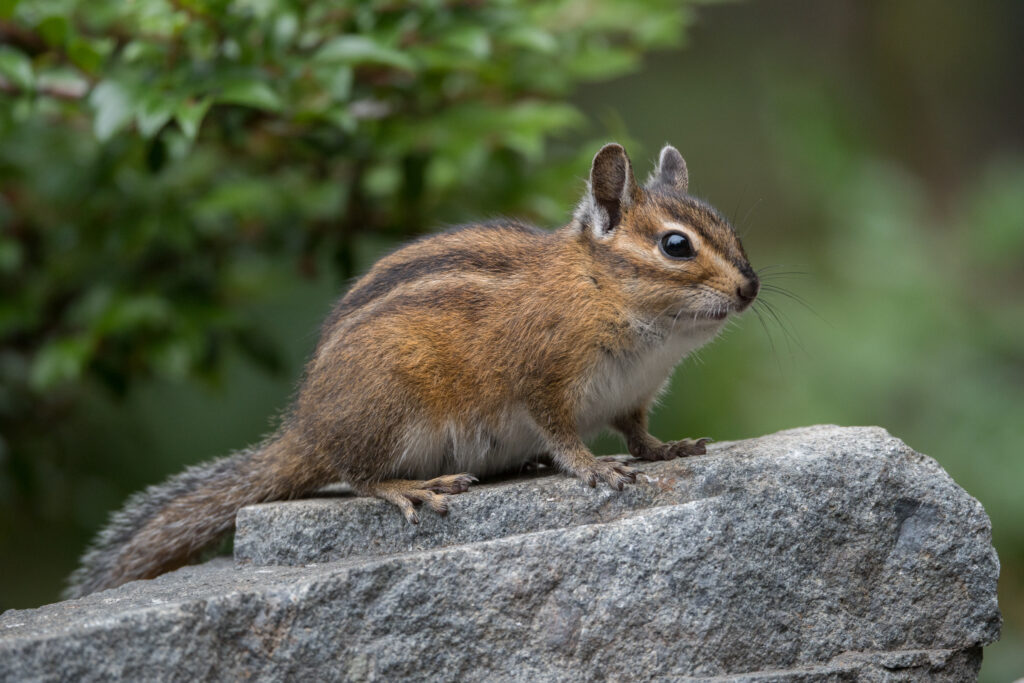
This was one of my earlier visitors during the day. It’s a Black-headed grosbeak which I judge to be either a female or a juvenile.
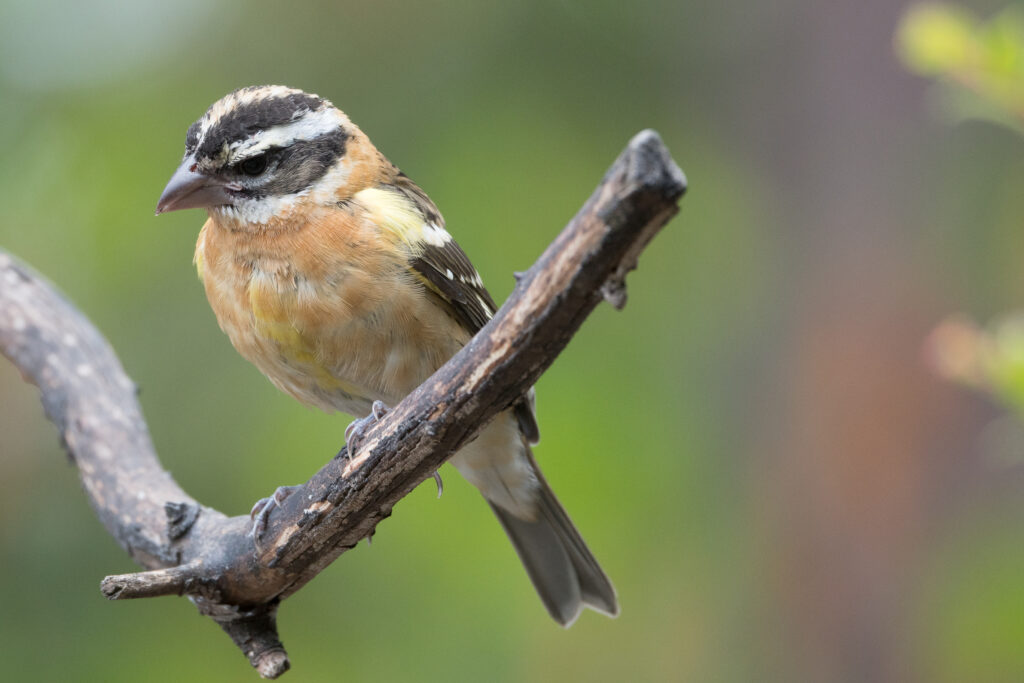
Warblers are notoriously difficult to identify, and fall warblers, when dealing with non-breeding plumage, end-of-season plumage, females and juveniles are the most difficult to identify. I’m going out on a proverbial limb (pun intended) to identify this as a Yellow warbler. (As always, in the name of accuracy, I welcome feedback regarding identifications.)

And another photo of the same bird…
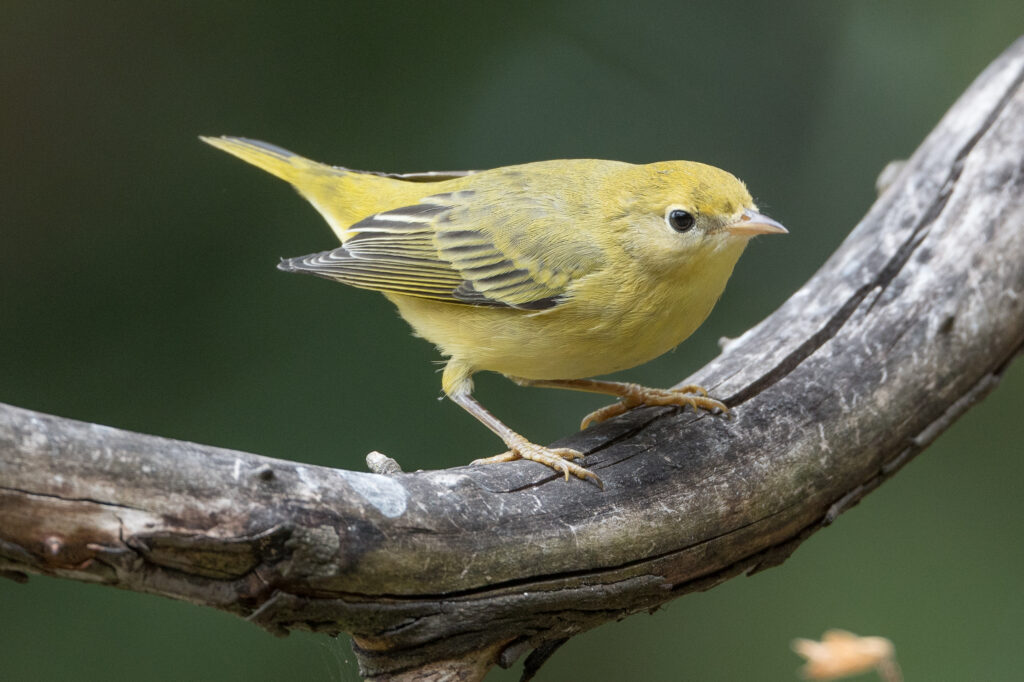
I believe this to be a juvenile Orange-crowned warbler, by far the most numerous warbler of the day. (Note the tumor on the bird’s left leg.)
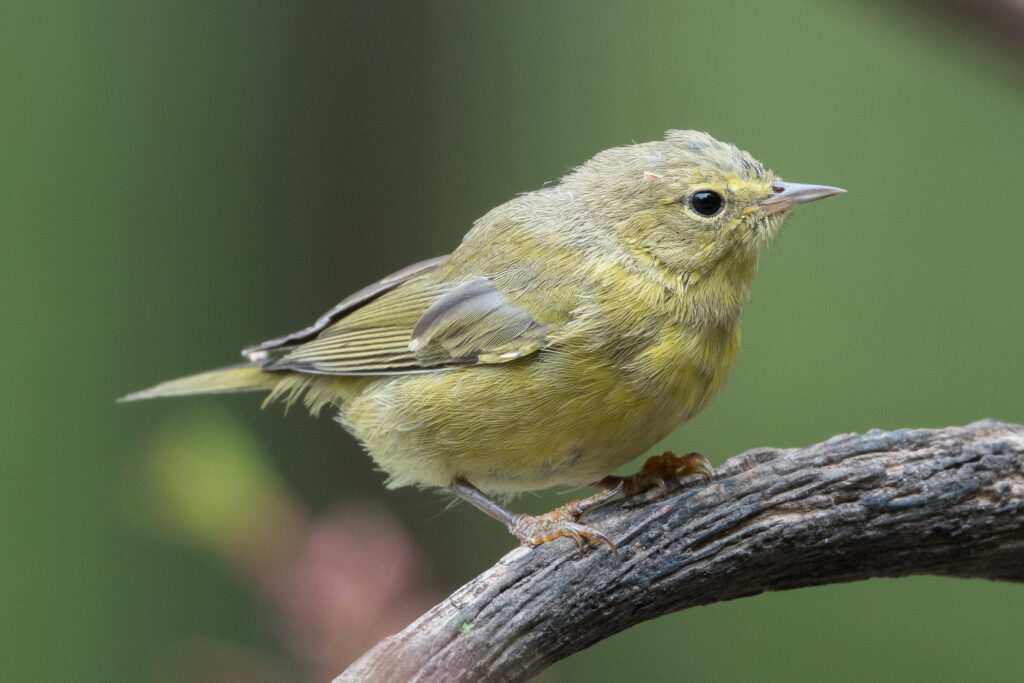
Another Orange-crowned warbler, this one probably an adult. In the spring/summer my standards for this species’ identification is more or less uniform coloring with a slightly darker green back and pale yellow breast. It has a broken eye ring with a dark line running through it, but the overall impression (as you can see) is that of an undistinguished, pale yellow-green bird.
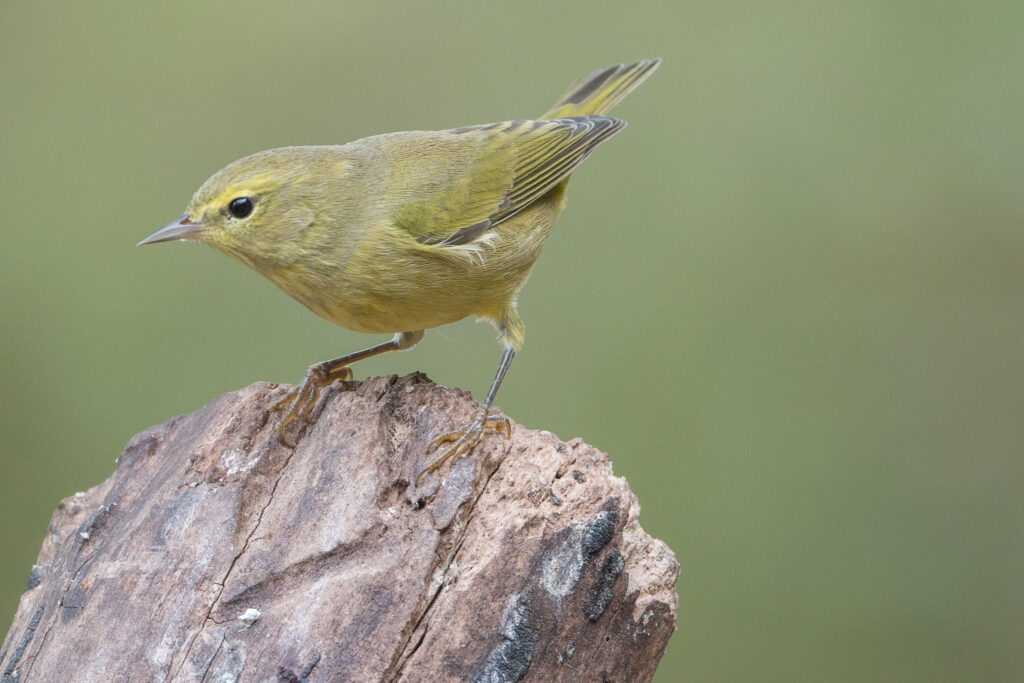
Another Orange-crowned warbler image…
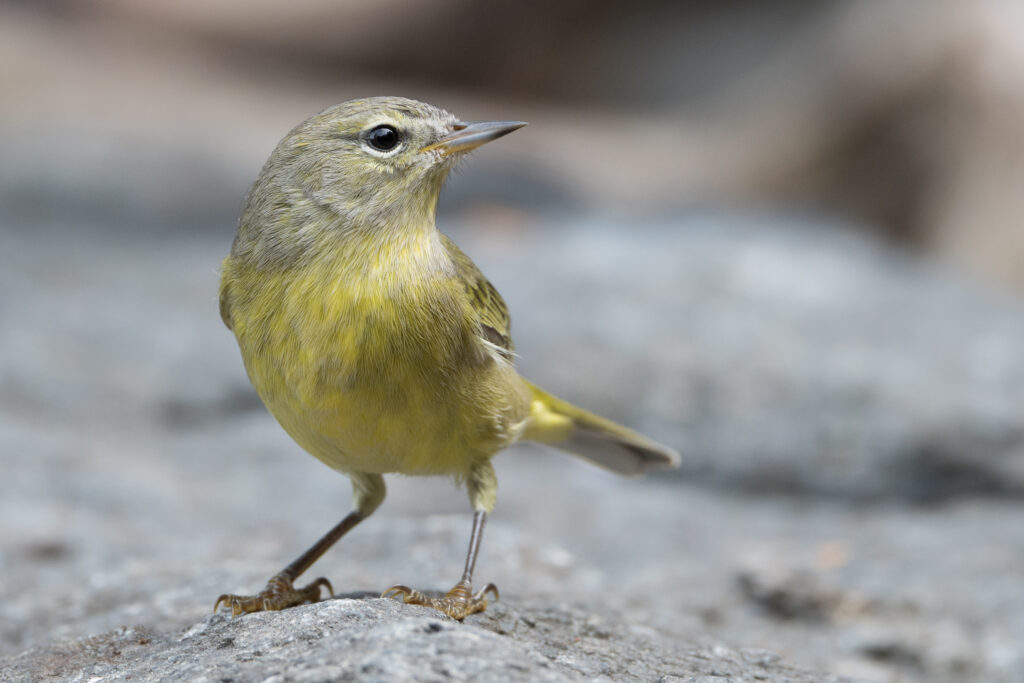
Finally.. an image of a bird on which we should all be able to agree… a juvenile American robin! lt seems rather late for juveniles, but they have been dribbling in over the past month or so.
